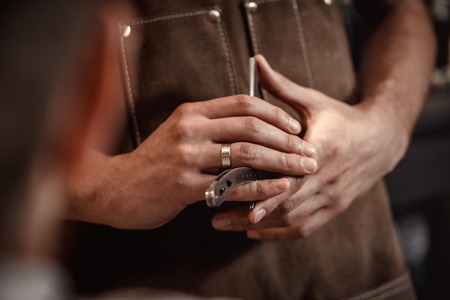Introduction: Feng Shui Meets the British Bedroom
Feng Shui, an ancient Chinese practice focused on harmonising one’s environment, may seem a world away from the classic British bedroom. Yet, as more UK couples seek to create restful, balanced spaces that nurture both wellbeing and relationships, exploring Feng Shui’s principles is proving surprisingly relevant. This guide aims to demystify the essentials of Feng Shui for the British context—combining centuries-old wisdom with a practical approach tailored to British homes and sensibilities. Whether you reside in a Victorian terrace or a modern flat, understanding how energy flow (or “chi”) can influence mood, intimacy, and daily comfort provides an intriguing new lens for reimagining your shared bedroom space. For couples looking to foster connection while maintaining a distinctly British touch—think cosiness, privacy, and understated style—this blend of eastern philosophy and local tradition might just offer the key to a more harmonious home.
2. Setting the Scene: The Layout of a British Bedroom
When it comes to creating harmonious energy in the bedroom, the physical layout is your starting point. In Britain, typical bedroom layouts are influenced by architectural history, space constraints, and local customs. Whether you’re living in a Victorian terrace, a semi-detached house, or a modern flat, each presents its own set of practical limitations that must be considered when applying Feng Shui principles.
Common Bedroom Layouts in British Homes
| Home Type | Bedroom Features | Typical Challenges |
|---|---|---|
| Victorian Terrace | Narrow rooms, chimney breasts, sash windows | Limited wall space for bed placement, awkward alcoves |
| Semi-Detached House | Larger windows, built-in wardrobes, radiators under windows | Bed often shares wall with bathroom or staircase |
| Modern Flat/Apartment | Open-plan storage, en-suite bathrooms, floor-to-ceiling windows | Lack of privacy, odd-shaped rooms due to building design |
| Cottage/Bungalow | Low ceilings, exposed beams, smaller floor area | Obstructed energy flow from sloped ceilings and beams |
Practical Limitations for Feng Shui Application
Wall Space: British bedrooms often have radiators, fitted wardrobes, or chimney breasts dominating walls. These features can restrict optimal bed positioning—ideally away from draughty windows and not directly opposite doors.
Windows: Large sash or casement windows are common but can make it difficult to create a ‘command position’ for the bed (facing the door but not in direct line with it). Blackout blinds or heavier curtains may be needed for better sleep and energy retention.
Floor Space: Smaller bedrooms require creative solutions. Multi-functional furniture and under-bed storage help reduce clutter—a key principle in Feng Shui—but overcrowding should be avoided.
Tried-and-Tested Tips for British Bedrooms
- If possible, place your bed so you can see the door without being directly in line with it—often achieved by angling the bed or using a freestanding headboard as a buffer.
- Avoid placing beds under windows due to drafts and energy loss. If unavoidable, use thick curtains or screens as mitigation.
- Maintain symmetry with bedside tables and lamps—this supports relationship harmony according to both Feng Shui and British design sensibilities.
- If your only option is to share a wall with a bathroom or stairs (common in semis), add soft furnishings or artwork to buffer disruptive energy.
Conclusion: Work With What You’ve Got
The quirks of British homes mean perfection isn’t always possible. Instead, aim for balance and comfort within your unique space. By recognising typical layouts and their challenges, you can thoughtfully adapt Feng Shui principles for a bedroom that feels both distinctly British and energetically harmonious for couples.
![]()
3. Colour, Texture, and Lighting: Creating Harmony
When it comes to bedroom Feng Shui for couples in the UK, the interplay of colour, texture, and lighting is fundamental for setting a harmonious tone. British homes often favour muted palettes—think calming greys, soft sage greens, dusky pinks, or classic off-whites—which naturally create a restful backdrop. These hues are not only stylish but also evoke a sense of balance and calm that’s essential for shared spaces. For couples, it’s wise to avoid harsh or overly vivid colours; instead, opt for tones both partners find soothing.
Textiles: Layering with British Flair
Texture brings depth and warmth to any bedroom. In Britain, natural fibres like wool throws from Yorkshire mills, crisp cotton bedding, and velvet cushions are highly prized. A well-layered bed with tactile elements—perhaps a Scottish tartan blanket or linen sheets—can foster comfort and intimacy. Consider adding a plush rug at the bedside; it softens the space and feels welcoming on chilly mornings.
Lighting: Setting the Mood
The right lighting transforms a room’s energy. Overhead lights can be too stark; instead, embrace ambient lighting with soft-glow lamps on each side of the bed or wall sconces with dimmer switches. British bedrooms often make use of vintage-inspired table lamps or modern designs in brushed brass or ceramic finishes. Candles are another popular choice for special evenings—opt for subtle scents like lavender or sandalwood for relaxation without overpowering the senses.
Balancing Individual Preferences
Harmony means compromise; both partners should have input when selecting colours, fabrics, and light sources. If one prefers bold patterns while the other leans minimalist, try blending styles by limiting bolder prints to smaller accessories like cushions or art prints. The key is creating an environment where both people feel relaxed and at home—a true British sanctuary that encourages connection and calm.
4. Furniture Choices: Beds, Wardrobes, and British Traditions
When considering bedroom Feng Shui for couples in the UK, furniture arrangement is a subtle art that blends age-old Eastern principles with uniquely British habits. The placement of the bed is the cornerstone: according to Feng Shui, a bed should be positioned so you can see the door without being directly in line with it—what’s known as the “command position.” In many traditional British homes where space can be limited, this often means angling the bed or making clever use of alcoves.
Wardrobes are another staple of British bedrooms. Fitted wardrobes are popular due to their efficiency in managing clutter—a key concern in Feng Shui. Avoid placing heavy wardrobes too close to the bed, as their presence can feel oppressive and block positive energy. Instead, opt for built-in storage along one wall or at the foot of the bed if space allows.
Clutter is an enemy of both serenity and Feng Shui. Many British couples use under-bed storage, but it’s best to keep this area clear or only store soft items like linens to ensure good energy flow. Traditional bedroom furniture such as bedside tables and dressing tables should be kept tidy, with pairs preferred to promote relationship harmony.
| Furniture | Feng Shui Tip | British Tradition |
|---|---|---|
| Bed | Command position, solid headboard, not under window | Often against central wall, sometimes under window in small rooms |
| Wardrobe | Avoid looming over bed, keep doors closed | Fitted wardrobes to maximise space, mirrored doors common |
| Bedside Tables | Use in pairs for balance | Matching sets for couples are typical |
In summary, applying Feng Shui to your bedroom furniture means balancing practical British traditions with mindful arrangement. Prioritise clear pathways around the room and avoid overcrowding. A harmonious layout supports restful sleep and a strong partnership—qualities valued in both Chinese philosophy and British domestic life.
5. Personal Touches: Art, Photos, and Sentimental Items
When it comes to bedroom Feng Shui for couples in Britain, personal touches are where your shared story really comes to life. The British have a well-documented fondness for family history, nostalgia, and mementos—think of the pride in displaying a grandparent’s wedding photo or a watercolour from a favourite Cornish holiday. However, blending two people’s backgrounds and tastes calls for both sensitivity and creativity.
Start by having an open conversation about which items hold meaning for each of you. This could be anything from framed photographs to inherited keepsakes, or even quirky souvenirs picked up on weekend getaways. The aim is to curate—not clutter—the space. According to Feng Shui principles, artwork and decor should evoke positive memories and harmony, rather than past heartbreak or discord.
When selecting art for your shared space, opt for images that represent unity and tranquillity. Pictures of pairs—like birds, boats, or intertwined trees—subtly reinforce the idea of partnership. Avoid solitary figures or anything that hints at loneliness; instead, prioritise scenes that both partners find soothing or uplifting. If your tastes differ (say, one favours modern abstracts while the other loves classic landscapes), consider dedicating a wall to each style or finding an artist whose work bridges your preferences.
Family photographs are quintessentially British, but too many can overwhelm the room’s energy. Choose a small selection with special relevance to your relationship—a favourite day out in the Lake District, or a cherished wedding portrait—and frame them in a way that complements your decor scheme. For sentimental objects like heirlooms or travel trinkets, display them thoughtfully on shelves or bedside tables, ensuring they don’t dominate the room.
In summary, the key is balance: honour both partners’ histories while maintaining a calm and welcoming atmosphere. By weaving together meaningful touches with care—and keeping the quintessential British appreciation for personal stories at heart—you create a bedroom that feels uniquely yours as a couple.
6. Troubleshooting: Navigating Small Spaces and Shared Living
If you’re a couple in the UK, chances are you might be sharing a compact bedroom in a terraced house or flat, possibly with limited scope for grand Feng Shui changes. But small spaces don’t have to mean cramped energy or tension. Here’s how to make practical Feng Shui adaptations that work for British couples living in rented or modestly sized homes.
Embracing Versatility in Compact Bedrooms
In many British homes, especially Victorian terraces and city flats, the bedroom often serves multiple functions. Opt for multi-purpose furniture—think ottoman beds with storage or floating shelves above bedside tables—to reduce clutter and maximise flow. Keep your pathways clear; even moving a laundry basket out of the main walkway can significantly improve chi (energy) circulation.
Flexible Solutions for Shared Spaces
If you’re renting, permanent alterations may be off-limits. Instead, use removable hooks for artwork or mirrors, and choose décor that enhances warmth and partnership—such as pairs of cushions or lamps—even if you can’t repaint walls. Plants like peace lilies or snake plants are landlord-friendly ways to purify air and soften sharp corners without breaching tenancy agreements.
Negotiating Personal Items and Privacy
In shared or compact bedrooms, respecting each other’s personal space is vital. Designate specific drawers or shelves for each partner’s belongings. If wardrobes are tight, invest in under-bed storage boxes labelled for clarity. This helps reduce arguments over clutter and ensures both partners feel valued within the space.
Adapting Traditional Feng Shui for Modern British Homes
The classic “bed facing door” rule can be tricky in small rooms with fixed layouts. In such cases, place a soft rug between the bed and door to symbolically ‘buffer’ the flow of energy. If your bed must be against a wall due to space constraints, balance the arrangement by placing matching bedside tables or lamps where possible—even small shelves will do the trick.
Making Peace with Imperfection
No home is perfect, especially in Britain where architectural quirks abound. The key is to focus on harmony rather than strict rules. By making thoughtful adjustments—prioritising comfort, mutual respect, and tidiness—you can foster a nurturing environment, regardless of square footage.
7. Conclusion: Embracing Harmony at Home
In summary, bringing Feng Shui into your bedroom as a couple isn’t about strict rules or chasing perfection—it’s about fostering togetherness and comfort in your shared space. We’ve explored how British sensibilities can blend effortlessly with traditional Feng Shui principles: from rearranging furniture for better energy flow to choosing calming colours and adding personal touches that reflect both partners’ personalities. The real beauty lies in the process itself; treating bedroom Feng Shui as a collaborative experiment invites open communication, compromise, and a bit of fun along the way. By approaching these changes with curiosity and kindness, you’ll not only create a more harmonious bedroom but also strengthen your connection as a couple. So don’t be afraid to try new layouts, swap out décor, or simply have an honest chat about what makes each of you feel at ease. The journey towards harmony is ongoing—and uniquely yours. Here’s to happier mornings, restful nights, and a bedroom that truly feels like home for both of you.


